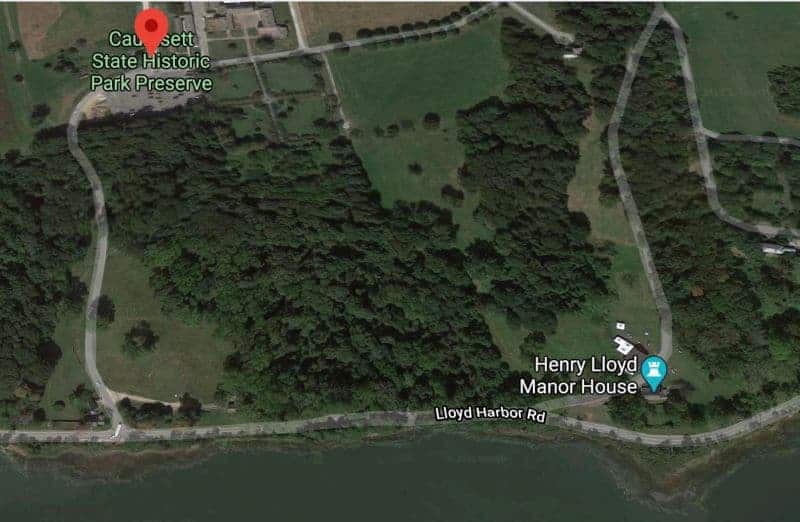A project to uncover and preserve a historical burial area at Caumsett State Park is expected to get underway this spring.
The work will focus on an area once used by members of the Lloyd family where enslaved persons who lived and worked on their Lloyd Neck estate also were buried.
State Sen. Jim Gaughran and Town Councilwoman Joan Cergol recently announced the project to uncover hidden Black history by clearing the area of vegetation, and then, searching for clues to identify, document and honor those enslaved by the Lloyd family.
The first member of the Lloyd family to live on the Neck was Henry Lloyd, who died in 1763. Following his death, the Lloyd family constructed a burial vault. In 1912, when the last of the Lloyd lands on the Neck were sold, the remains of the deceased members of the Lloyd family were moved to Huntington Rural Cemetery. The remains of enslaved persons were not moved.
The Cergol-Gaughran preservation partnership includes cooperation from Huntington’s town historian, Preservation Long Island, the Caumsett Foundation, and the New York State Parks Department.
“It is long known that the enslaved persons working for the Lloyds were laid to rest in this family burial ground, and quite possibly, the first-published African American poet, Jupiter Hammon. This project will bring to bear the best of our preservation partners’ expertise, tools, research and deep respect for this undertaking, and at long last, hopefully reveal details about the persons who are very much a part of an untold chapter of both Huntington and American history,” Cergol said.
“As we celebrate Black History Month and the significant and immeasurable contributions of the Black community, it’s equally important to remember and honor the lives of enslaved people and early Black settlers who built Long Island,” Gaughran said.
Jupiter Hammon, who was born into slavery at Lloyd Manor, gained recognition as the first Black poet published in North America with the release of “An Evening Thought. Salvation by Christ with Penitential Cries” in 1761.
Hammon’s works garnered acclaim for its sharp criticisms of the institution of slavery couched in layers of symbolism and his religious faith.
Historians say it’s likely Jupiter Hammon is buried at the former Lloyd cemetery because of his connection to the family and property, and also, because no records have been found indicating any other burial place.
Town Historian Robert Hughes has secured the permissions from the state and town to allow the preservation process to begin this spring, starting with the removal of overgrown vegetation and followed by the mapping and photography of the site.
“It is important to identify and preserve historic African American sites such as this,” said Hughes. “They have been overlooked and neglected for too long.”
In an effort to comply with all state, federal, and local COVID-19 guidelines as well as the parameters of the state permit, the initial preservation work will be restricted to the Town Historian, the Preservation Director of Preservation Long Island, and a member of the Caumsett Foundation.
“Preservation Long Island enthusiastically supports the Town of Huntington’s efforts to study and preserve the historic burying grounds at Caumsett State Park, representing often overlooked stories of early colonial development and African American history on Long Island,” said Sarah Kautz, preservation director of Preservation Long Island.
“The Caumsett Foundation works closely with the New York State Parks Department and the community to support and enhance Caumsett State Historic Park Preserve as a unique and historic environment,” said the Caumsett Foundation Board of Directors in a statement. “Toward this goal, we are excited to be a partner in this exciting project.”
The Lloyd cemetery preservation project is part of a broader effort by the Town of Huntington to illuminate the past contributions of its Black community members, most recently including those of Peter Crippen, whose former home at 61 Creek Road is the subject of archaeological and structural assessment studies. The oldest section of the house, believed to be the Town’s first mill building, dates back to 1672.
In a related measure last August, Cergol sponsored an initiative to create a committee to come up with a public art project to celebrate the accomplishments and service of Huntington’s Black residents. The committee is considering Fair Meadow Park for that installation.
“I am elated to be part of the Black History Project,” said Irene Moore, chair of the Town’s African American Historic Designation Council, “and the plan to preserve the grave site of the enslaved population of the Lloyd Family is an excellent idea and long overdue.”

